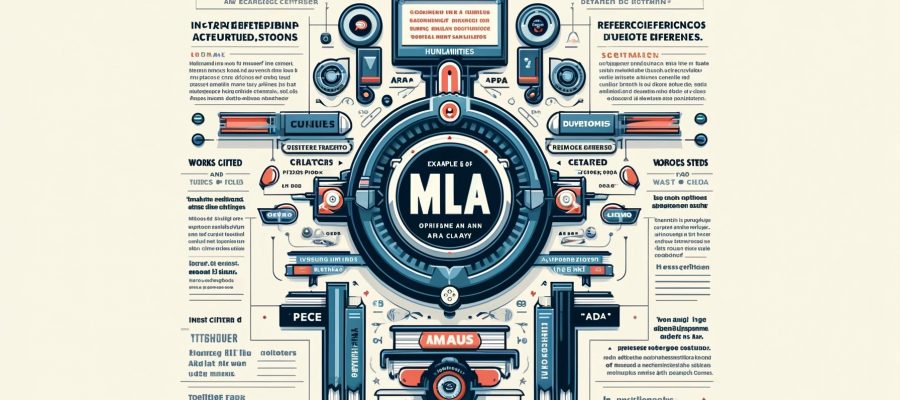The MLA (Modern Language Association) citation and formatting style is used primarily in the humanities:
- History.
- Literature.
- Religious studies.
- Art.
- Learning foreign languages and linguistics.
- Philosophy.
- Architecture, design, and applied arts.
- Psychology.
- Ethnography.
- Culturology.
The reference page at the end of the MLA document is titled “Works Cited”.
An example of an MLA style quote:

Razzak, Abdul N. “Paulo Freire’s Critical and Dialogic Pedagogy and its Implications for the Bahraini Educational Context.” Educational Philosophy and Theory, vol. 52, no. 9, 2020, pp. 999-1010.
What is the Difference Between MLA and APA
There is another style of citation – APA (American Psychological Association).
There are several differences between MLA and APA:
- MLA is only used in the humanities, while APA is used in social sciences.
- The APA Reference page is called “Links”.
- In MLA, the publication date is written after the revision, and in APA, immediately after the author’s name.
- MLA uses the author’s name and page numbers for citation in the text. APA uses the author’s last name and publication year.
- In MLA style, commas are not used in text quotations, but in APA they are.
Benefits of MLA style
The MLA style makes it easy for readers to find sources of information, edition, year of issue, authors, titles of scientific books and journals. Thanks to MLA style standards you will be able to:
- Make hints for your readers. Thanks to these tips, they will quickly find the information they are interested in.
- Help readers focus on your ideas. They will be completely absorbed in the process of studying information, and will not be distracted by unfamiliar formatting.
- Show your credibility in the humanities, awareness of your audience and their needs.
Learn more about how AI is transforming education and its impact on learning and teaching.
In this Section You Will Find:

Resources for Citations in Text and Pages with Cited Works
Explanation: This section provides various resources to help you correctly cite sources within the text and on the Works Cited page according to MLA style guidelines. Proper citation is crucial for avoiding plagiarism and giving credit to the original authors of the works you reference.
Examples:
- In-Text Citation Example:
- Original Text: “Paulo Freire’s Critical and Dialogic Pedagogy has profound implications for the Bahraini educational context.”
- MLA In-Text Citation: (Razzak 1003)
- Works Cited Page Example:
- Book: Freire, Paulo. Pedagogy of the Oppressed. Translated by Myra Bergman Ramos, Continuum, 2000.
- Journal Article: Razzak, Abdul N. “Paulo Freire’s Critical and Dialogic Pedagogy and its Implications for the Bahraini Educational Context.” Educational Philosophy and Theory, vol. 52, no. 9, 2020, pp. 999-1010.
Samples of MLA Documents
Explanation: This section provides sample documents formatted in MLA style. These samples can serve as a reference for formatting your own papers, ensuring you adhere to MLA guidelines for layout, citations, and overall structure.
Examples:
- Sample Research Paper:
- Title Page: MLA style does not require a separate title page. The first page includes the student’s name, instructor’s name, course, and date, followed by the paper’s title and the text.
- Header: Author’s last name and page number in the top right corner.
- Example:Wellgir 1
Elly Wellgir
Professor Smith
English 101
4 July 2024
Title: The Impact of AI on Modern Education
- Sample Works Cited Page:
- The list of sources cited in the paper, formatted according to MLA guidelines.
- Example:Works Cited
Freire, Paulo. Pedagogy of the Oppressed. Translated by Myra Bergman Ramos, Continuum, 2000.
Razzak, Abdul N. “Paulo Freire’s Critical and Dialogic Pedagogy and its Implications for the Bahraini Educational Context.” Educational Philosophy and Theory, vol. 52, no. 9, 2020, pp. 999-1010.
Presentation Slide and Poster in MLA Class
Explanation: This section provides templates and examples of presentation slides and posters that adhere to MLA formatting guidelines. These resources are particularly useful for students and educators who need to create visual aids for MLA-related presentations.
Examples:
- Presentation Slide:
- Title Slide: Includes the title of the presentation, the presenter’s name, and the date.
- Content Slide: Uses MLA citations for any referenced works.
- Example:Title: Understanding MLA Style
Subtitle: A Guide for Students
Presented by: Elly Wellgir
Date: 4 July 2024
- Poster:
- Includes sections for the introduction, main points, and conclusion, with proper MLA citations for any referenced materials.
- Example:Title: The Benefits of MLA Style in Academic Writing
Introduction: Explanation of MLA style and its importance in the humanities.
Main Points: Easy source finding, reader focus, and credibility.
Conclusion: Summary of benefits and final thoughts.
By using these examples and resources, you can ensure that your work adheres to MLA standards, making it easier for your audience to follow and understand your research and ideas.
